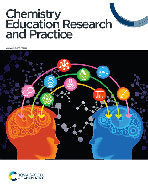Exploring the role of scaffolds in problem-based learning (PBL) in an undergraduate chemistry laboratory
Abstract
The need for shifting the expository laboratory instruction style to inquiry-based approaches is widely acknowledged. Problem-based learning (PBL), one of the inquiry-based approaches, advocates students’ self-directed learning. The literature indicates that scaffolding students’ independent learning is necessary for a PBL environment. In our study, we provided scaffolds such as a precursor task, reading material, and structured group discussion to facilitate the planning of a PBL task on indigo dyeing wastewater treatment. In this paper, we describe how these three scaffolds integrated within the PBL style contributed to students’ learning as per the stages of Kolb's Experiential Learning Cycle (ELC). We analyzed the level of the abstract conceptualization stage of ELC through students’ experimental designs (EDs) of the PBL task. The results of the qualitative analysis of the scaffolded and un-scaffolded groups suggest that scaffolded students’ experimental design scores are higher. The qualitative results indicate that the structured group discussion influences the EDs planned by students more than the precursor task and the reading material. All three scaffolds help in the reflective learning and planning of executable EDs for a PBL task. The study indicates that students transitioning into the inquiry laboratory benefit from the inclusion of scaffolding.


 Please wait while we load your content...
Please wait while we load your content...